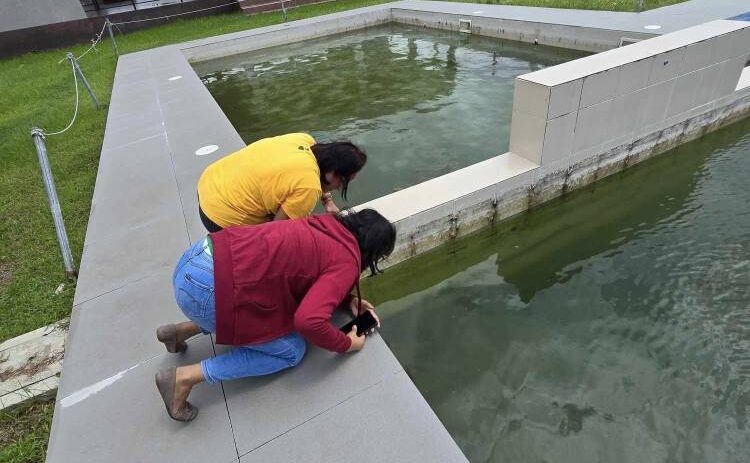
INSPECTION Iloilo Provincial Health Office personnel, in this Sept. 4 Facebook post, inspect a stagnant pool in a Pavia town subdivision that can be a mosquito breeding site. —ILOILO PROVINCIAL HEALTH OFFICE FACEBOOK
ILOILO CITY — The rapid rise in dengue cases across Western Visayas has sparked renewed efforts by the Department of Health (DOH) in the region to ensure that hospitals are well-equipped to handle the surge in patients, particularly in maintaining an adequate supply of blood products.
Dr. Bea Camille Natalaray, head of the Emerging and Re-emerging Infectious Disease cluster of the DOH, said they were working closely with hospitals to monitor blood inventory levels.
Although the current stocks of 582 units of whole blood, 1,001 units of packed red blood cells and 101 units of platelet concentrate were deemed sufficient, the continuous influx of dengue patients was a cause for concern.
Dengue, a mosquito-borne disease known for its potential to cause severe bleeding and a dramatic drop in platelet levels, often requires blood transfusions, especially in severe cases like dengue hemorrhagic fever.
As cases spike, the strain on blood banks intensifies, raising questions about the long-term sustainability of blood supplies in the region’s hospitals, health officials in the region said.
To manage the situation, the DOH in the region has not only reinstated dengue fast lanes in health facilities but also ramped up the distribution of essential supplies such as mosquito nets insecticide-treated materials, and oral rehydration salts to provincial and city health offices.
Affected areas, age range
Based on the data of the DOH, Iloilo province has the highest number of dengue incidents among Western Visayas’ provinces and highly urbanized cities this year with 6,069 cases. It is followed by Negros Occidental (2,418), Aklan (1,766), Capiz (1,581), Guimaras (1,320), Iloilo City (945), Antique (942) and Bacolod City (647).
The DOH said that the most affected demographic continued to be young people age 11 to 20 years, underscoring the need for targeted interventions in schools and communities.
In Iloilo province, dengue fever has claimed 17 lives from Jan. 1 to Aug. 24 this year, with 11 of these deaths occurring in August alone.
The Iloilo Provincial Epidemiology and Surveillance Unit reported a significant surge in cases, with 6,799 infections recorded from January to August, marking a 492 percent increase compared to the 1,151 cases over the same period last year.
Dr. Maria Socorro Quiñon, Provincial Health Office head, urged the public to actively eliminate mosquito breeding sites to prevent further fatalities.
“The higher the cases, the more risk of deaths,” she said.